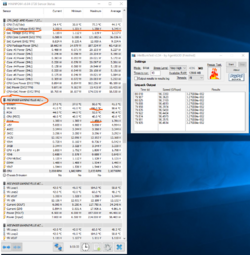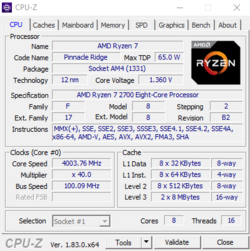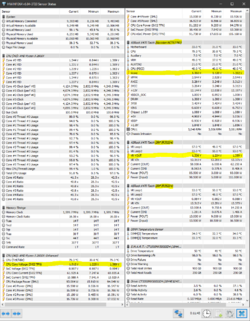- Joined
- Dec 27, 2008
What's the difference between "CPU Core Voltage" and "Vcore" in HWInfo64?
HWInfo64 shows a line under the CPU readouts section called "CPU Core Voltage (SV12 TFN)" that corresponds to the value I enter in bios for "Override CPU Core Voltage. Under load it drops a little bit as you can see at the LLC level I am currently using.
HWInfo64 shows a line under the motherboard readouts section called "Vcore" that actually rises significantly under load and, as you can see, exceeds 1.48 volts.
What is the difference between these two parameters. What is each actually measuring? Is "Vcore" here measuring VRM current?
I have also included a pic of CPU-z for comparison's sake.
Do you see any unsafe values here?
HWInfo64 shows a line under the CPU readouts section called "CPU Core Voltage (SV12 TFN)" that corresponds to the value I enter in bios for "Override CPU Core Voltage. Under load it drops a little bit as you can see at the LLC level I am currently using.
HWInfo64 shows a line under the motherboard readouts section called "Vcore" that actually rises significantly under load and, as you can see, exceeds 1.48 volts.
What is the difference between these two parameters. What is each actually measuring? Is "Vcore" here measuring VRM current?
I have also included a pic of CPU-z for comparison's sake.
Do you see any unsafe values here?


